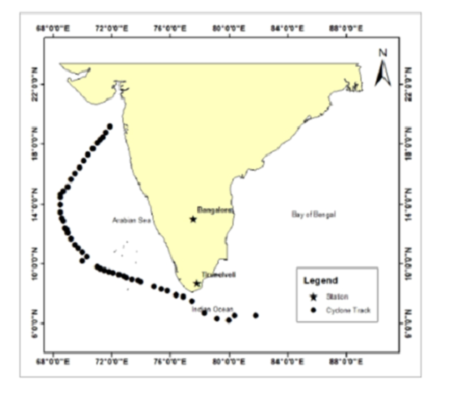


Indian Journal of Science and Technology
DOI: 10.17485/IJST/v14i36.1459
Year: 2021, Volume: 14, Issue: 36, Pages: 2832-2841
Original Article
E Karthikeyan1*, S Sathishkumar2, Srinivas Yasala1, K Emperumal2, C Ranjith Dev Inbaseelan3
1Centre for Geotechnology, Manonmaniam Sundaranar University, Abishekapatti, Tirunelveli, 627012, Tamil Nadu, India
2Equatorial Geophysical Research Laboratory, Indian Institute of Geomagnetism, Krishnapuram, Tirunelveli, 627011, Tamil Nadu, India
3PG and Research Department of Physics, Bishop Heber College, Tiruchirappalli, 620017,
Tamil Nadu, India
*Corresponding Author
Email: [email protected]
Received Date:07 August 2021, Accepted Date:23 September 2021, Published Date:03 November 2021
Background/Objectives: The ionospheric response to the tropical cyclone (TC) OCKHI of December 2017 in the equatorial region is presented in the study. Methods/Statistical analysis: The ionospheric response includes a change in Total Electron Content (TEC) is utilized using the stations of Tirunelveli and Bangalore. The critical frequency (foF2) from Ionosonde over Tirunelveli station also considered to study the TC effect in the F2 region of ionosphere. Findings: It has been observed that the significant changes in the equatorial ionosphere exhibits during the tropical cyclone (TC) OCKHI. They are: Ionospheric parameter of vertical total electron content (VTEC) varies during the TC (i.e. from Day 332 to Day 336 of the year 2017) as the cyclone center is near to the Tirunelveli (8.7º N, 77.8º E) and the same follows for the IGS station of Bangalore. In addition, ionosonde measurements of foF2 perceived for the local night time support the TEC decrease noted over Tirunelveli when the cyclone attains its peak on 01 December 2017. Novelty/Applications: Using the ionosonde data over the equatorial ionosphere, such behavior may not be reported earlier to the best of my knowledge. The gravity wave induced by the TC Ockhi redistributes the element of the ionosphere due to strong convection and lightning activity.
Keywords: TEC; Cyclone; foF2; OCKHI; and gravity waves
© 2021 Karthikeyan et al. This is an open-access article distributed under the terms of the Creative Commons Attribution License, which permits unrestricted use, distribution, and reproduction in any medium, provided the original author and source are credited. Published By Indian Society for Education and Environment (iSee)
Subscribe now for latest articles and news.